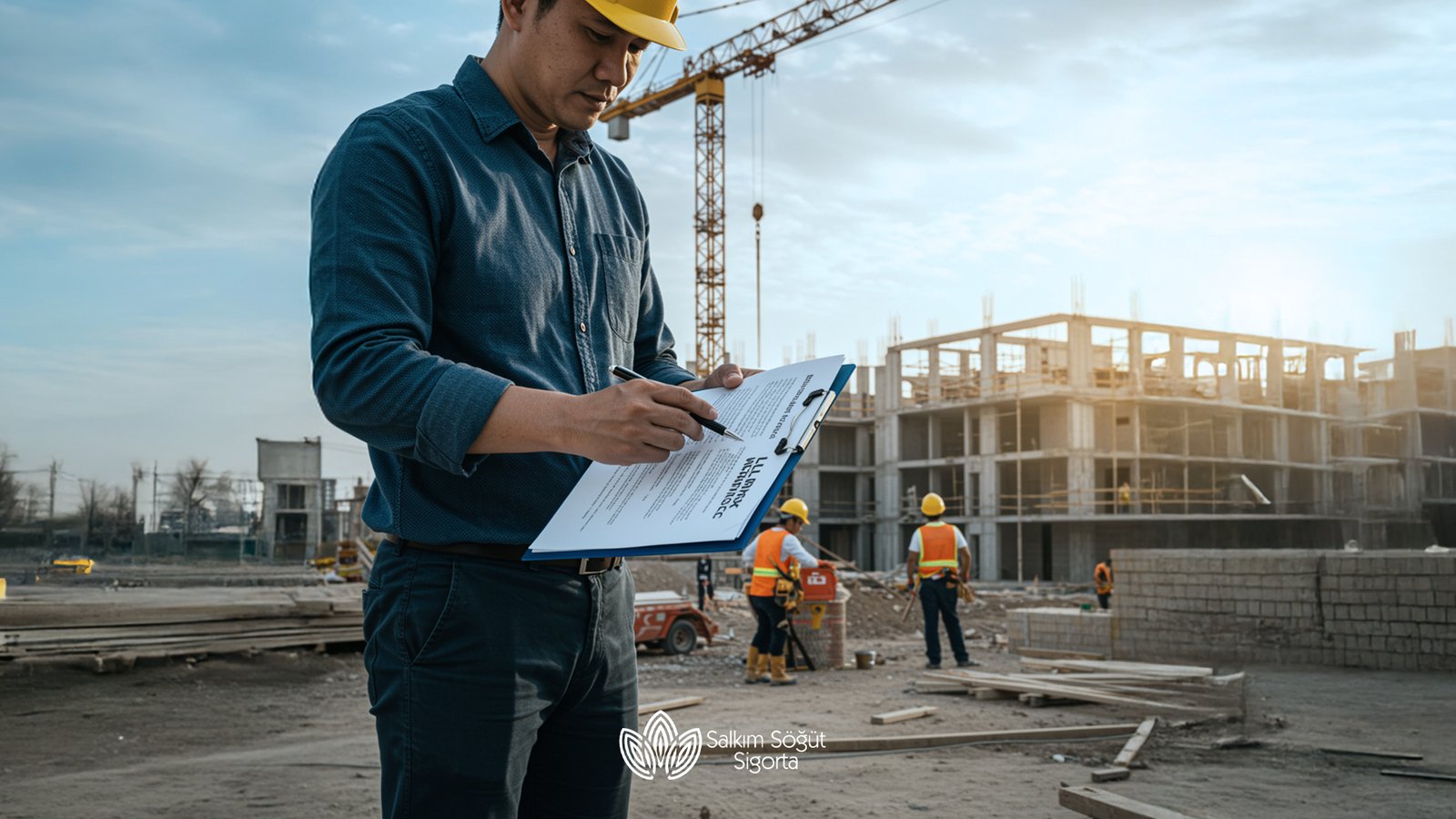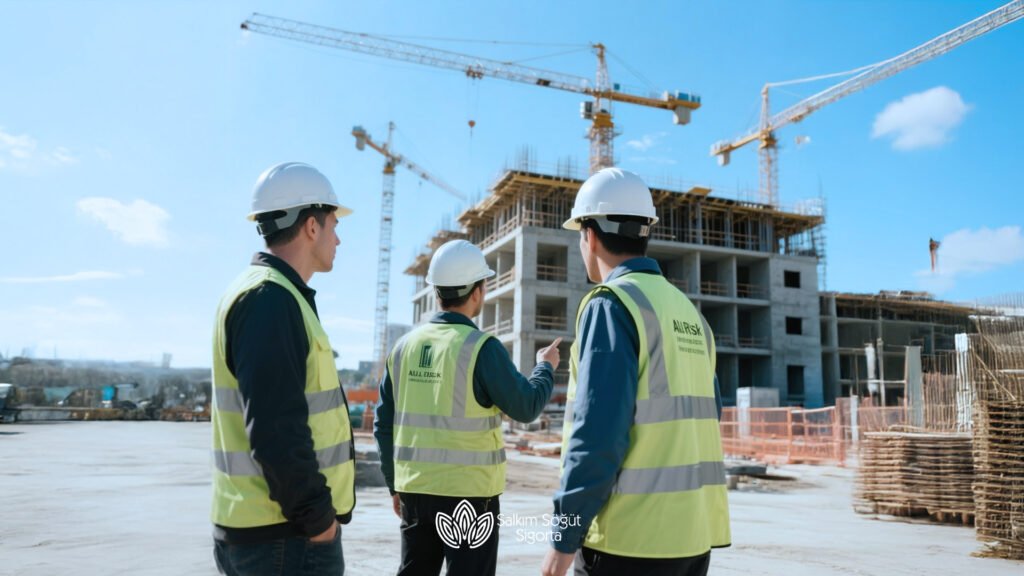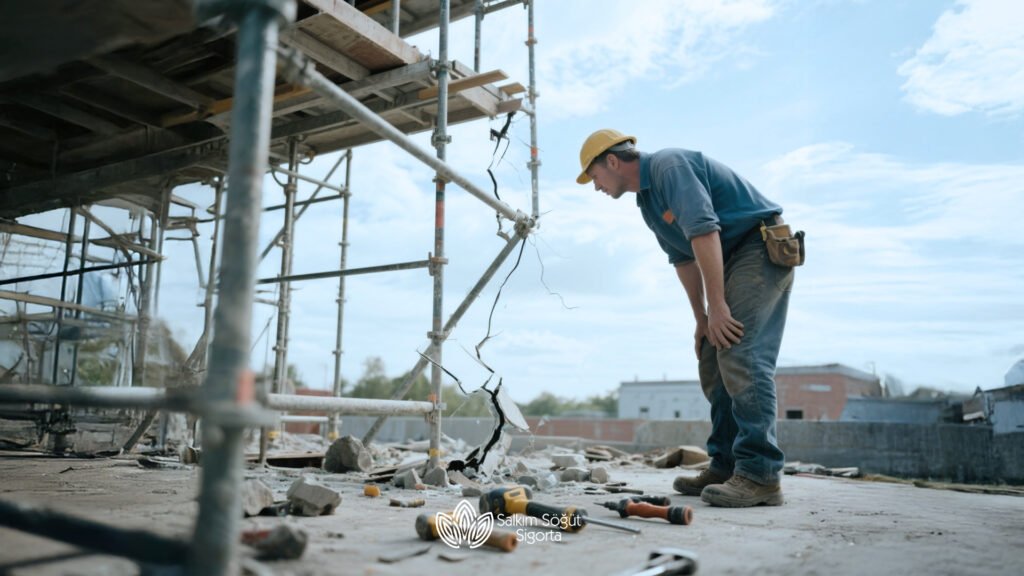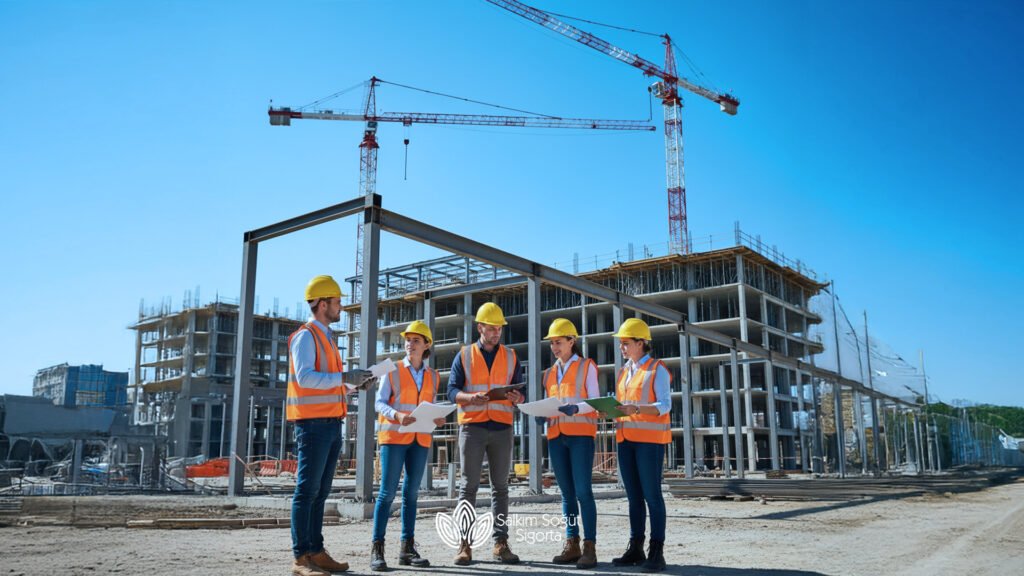
Starting a construction project is not just about erecting a building, but laying the foundation of a grand dream. From the architect to the engineer, from laborers to investors, everyone focuses on one goal: producing a solid, safe, and aesthetic structure. Yet the construction process is far more complex and risky than what the plans on paper suggest, because at every stage there are uncertainties, environmental impacts, and human factors at play.
One morning you might come to the site and find that a crane, which was perfectly stable the day before, has collapsed; a sudden downpour could ruin freshly poured concrete; or materials worth thousands may disappear in a nighttime theft. Sometimes an unexpected accident can severely impact both the progress of the project and the safety of workers.
Construction All Risk Insurance is the construction industry’s unseen hero. As the name suggests, “All Risk” means protection against nearly every kind of risk. This insurance covers not only physical damages but many external factors that may disrupt the project process. In addition to earthquake, storm, fire, flood, theft, explosion, it may even cover damages caused to third parties.
Construction All Risk Insurance acts as a security shield from the start to the finish of the project. No matter how large the project, with this insurance both the investor and the contractor can continue the process without suffering financial collapse in the face of an unexpected event.
What Is Construction All Risk Insurance?
Beginning a construction project is not simply pouring concrete or laying bricks—it’s a significant investment, effort, and responsibility. But no project always proceeds smoothly. Sometimes nature, human error, or a completely unforeseen event can negatively affect the project. That’s exactly why Construction All Risk Insurance has become an indispensable part of the construction industry.
Simply put, Construction All Risk Insurance is a type of insurance that protects against any sudden and unexpected physical damage that may occur from the moment construction begins until the project is completed and delivered.
The “All Risk” expression comes from English and literally means “covering all risks.” That means anything not explicitly excluded in the policy is considered covered. So protection isn’t limited to specific events, but provided broadly against most potential risks.

This insurance applies to any type of structural project—whether it’s a residential building, hotel, factory, dam, bridge, or road project. From ground-breaking to roof installation, the policy springs into effect at every phase and prevents the insured from bearing the financial burden of any damage.
In other words, Construction All Risk Insurance offers strong assurance that eliminates the anxiety of “what if something happens.” Because in a process requiring labor, time, and high cost such as construction, even a small mishap can lead to considerable losses. With this insurance, contractors, investors, and project owners can focus more comfortably on their work; they gain a protective financial barrier against potential risks.
Why Is It So Important?
The construction sector is perhaps one of the most risk‑laden industries. A construction site is almost like a living organism—dozens of machines operate simultaneously, hundreds of workers contribute labor, and millions worth of materials are on site. Expecting everything to always go according to plan in such an environment is nearly impossible.
A moment of carelessness, equipment failure, or nature’s unpredictable force… all of these can delay the project, increase costs, or even halt it entirely. In such cases, both the contractor and the investor may face serious financial losses.
Construction All Risk Insurance is your rescuer in such moments. It provides protection against any sudden and unexpected damage during the project. So even if events such as fire, theft, storm, or on‑site accidents occur, the financial continuity of the project is guaranteed through insurance.
This insurance does more than cover damage—it also helps preserve continuity and confidence in the project. Because an insured project becomes more reliable in the eyes of investors and partners.

What Does Construction All Risk Insurance Cover?
The key feature of Construction All Risk Insurance is, as its name implies, its very broad protection scope. It covers many unexpected situations during the construction process. Of course, coverage depends on the chosen policy and the insurer’s conditions. But generally, the following risks are typically covered:
- Fire, explosion, and lightning strikes: Damages resulting from fires or explosions caused by site equipment, fuel, or electrical systems are covered.
- Natural disasters: Earthquake, flood, storm, land sliding, or water inundation are protected.
- Theft or attempted theft: Losses from stolen or damaged materials or equipment on the site are compensated.
- Construction accidents: Structural collapses, falling materials, on‑site accidents, or machinery accidents are included.
- Equipment damage: Physical damage to machinery like excavators, cranes, concrete mixers, etc. may be included.
- Material and accessory damage: Damages occurring during storage, transport, or installation are also protected.
- Third‑party liability: Damages caused to people or neighboring property by the construction site can be covered.
Of course, no two insurance policies are identical. Some insurers include damages caused by subcontractors, while others may exclude them. That’s why it’s crucial to closely examine the policy details and tailor them to your needs.
Exclusions
Although it is called “All Risk,” no insurance policy truly covers absolutely everything. Construction All Risk Insurance provides protection within certain limits. Therefore, it is very important to know what is excluded before signing the policy.
The following situations are generally excluded:
- Deliberate damage: Losses caused intentionally by the insured or employees are never covered.
- War, insurrection, terrorism, strikes: Political or social disturbances are usually excluded.
- Design or planning errors: Damages stemming from miscalculation, engineering faults or design flaws are excluded.
- Normal wear and tear: Natural degradation, rust, or material deformation over time are not insured.
- Indirect costs due to delay: Losses from income disruption or contractual penalties caused by delays are typically excluded.
In short, while Construction All Risk Insurance offers wide coverage, saying it covers “everything” would be incorrect. It is extremely important to carefully read all exclusions prior to signing to avoid surprise circumstances.

Construction All Risk Insurance Premiums
Premiums for Construction All Risk Insurance are not fixed; they depend on the specific conditions of each project. The insurance fee varies according to the total cost, duration, type of work, location and environmental risk factors. For example, projects in high‑earthquake zones will have different premiums than small residential constructions.
Factors like material quality, number of subcontractors, safety measures, and past claim history also influence the premium. In short, the cost of this insurance is proportional to the risk level borne by the project. That is why the most accurate premium is determined after analyzing project details.

